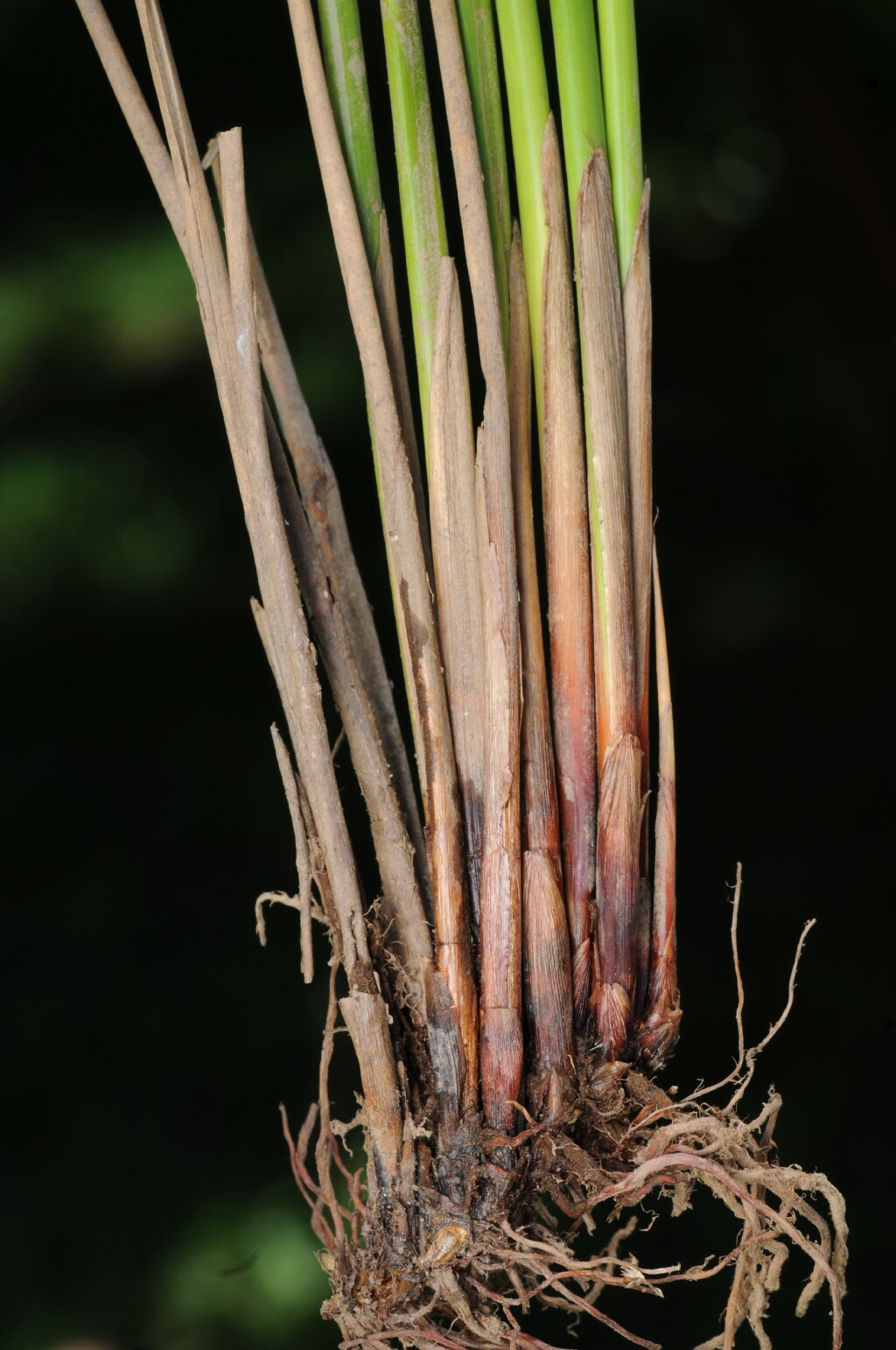Juncus effusus subsp. effusus
Densely tufted perennial with horizontal or ascending rhizomes. Cataphylls usually tight, dull reddish-brown towards the base, to c. 15 cm long. Culms erect, soft and easily compressed, shiny green or yellow-green, 30–150 cm high and 1.2–3.5 mm diam.; striations 30–70, not strongly raised; pith cobwebby, continuous throughout; stomates superficial. Inflorescence variable, flowers either scattered along numerous branchlets of various orientation or condensed into a rounded cluster with all branchlets obscured; primary bract continuous with culm, to c. 32 cm long; prophylls present. Tepals stramineous 1.5–2.5 mm long; stamens 3, anthers 0.5–0.8 mm long. Capsules ovoid to broadly ovoid, with an obtuse or retuse stramineous to reddish apex, shorter than or equal to the tepals, rarely longer (in forms with condensed inflorescence) 1.5–2.5 mm long. Flowers mostly Dec.–Apr., seeds shed mostly Feb.–May.
VVP, GipP, CVU, EGL, HSF, HNF, Strz, VAlp. Also naturalised SA, Qld, NSW, Tas. Presumed native to Europe, western and central Asia, and Africa, but widely introduced elsewhere. Occurs in cool, high-rainfall and often higher altitude regions of eastern Victoria, and a recently collected at Trentham in western Victoria. Recorded from roadside drains, borrow pits, lakes, dams, subalpine woodland, bogs, wet heathland and wet grassland, montane forests and cool-temperate rainforest.
 Spinning
Spinning